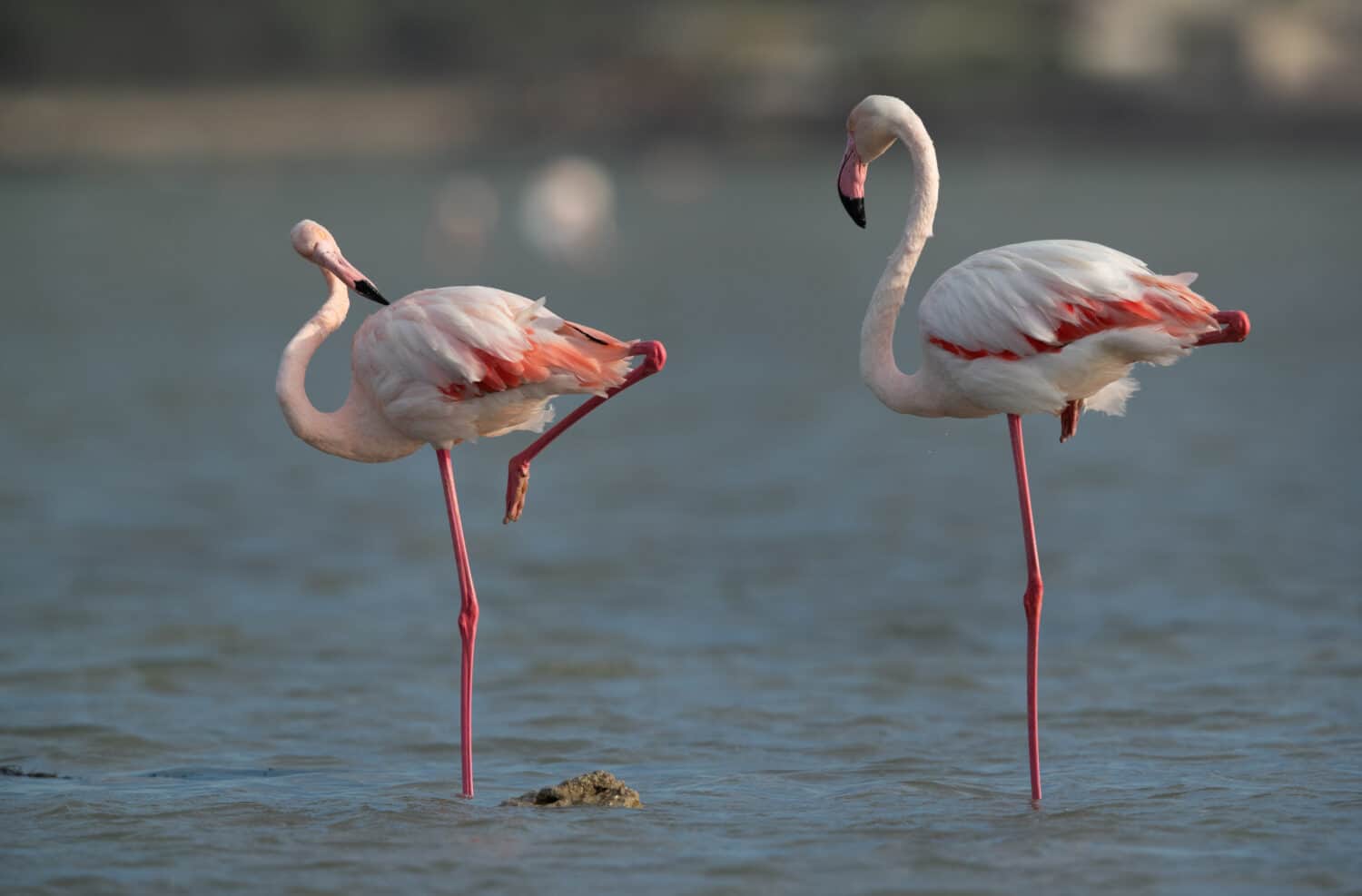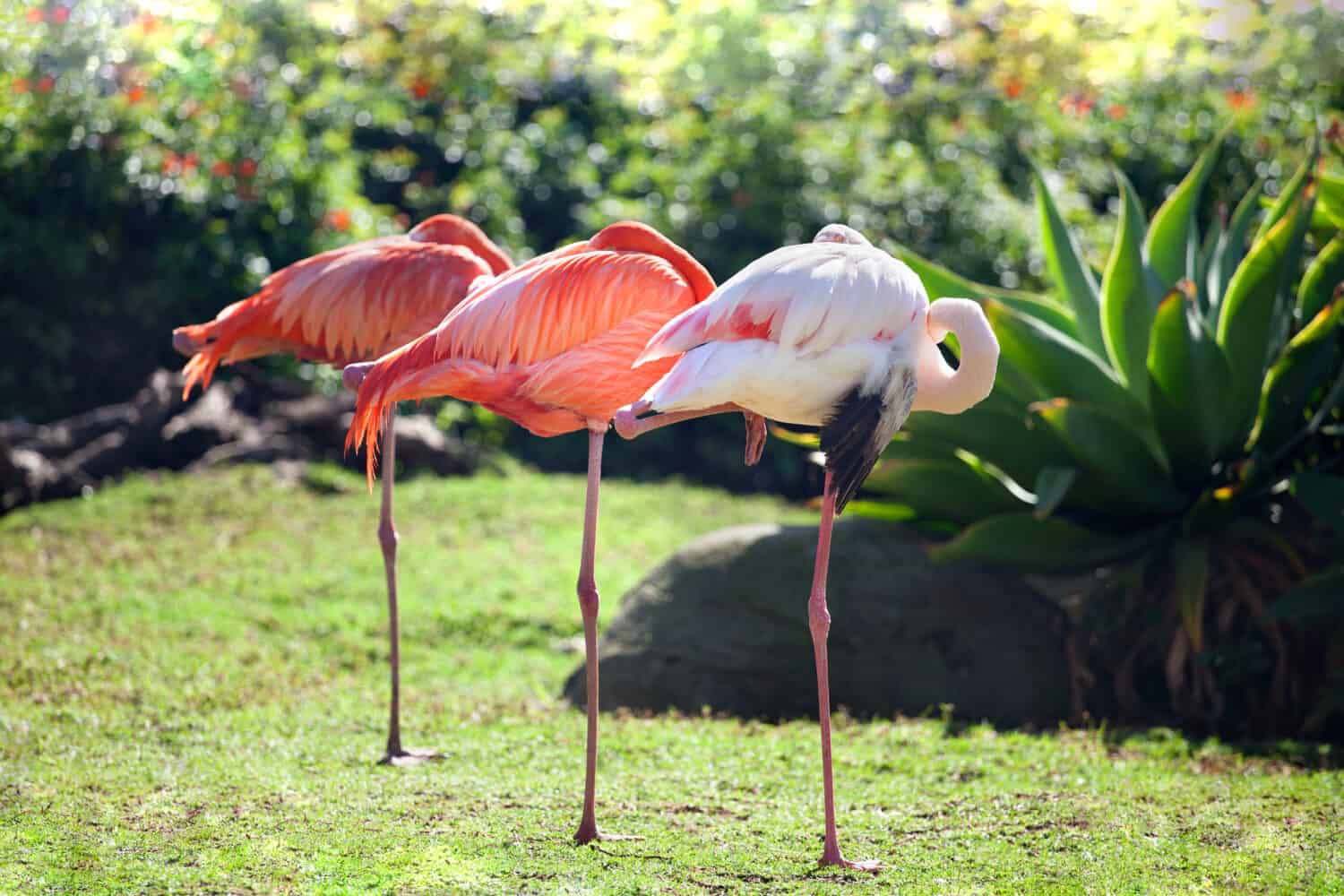After their pretty in pink coloration, perhaps what people associate most with flamingos is their one-legged stance. But why exactly do flamingos spend so much time standing on one leg? Scientists have explored several theories, and research into the question is still ongoing. Here are two possible explanations based on recent studies.
Explanation 1: Thermoregulation and Minimizing Exposure to Adverse Water Conditions

Standing on one leg may help flamingos keep warm as well as reduce exposure to other unfavorable conditions in the water.
©Dr Ajay Kumar Singh/Shutterstock.com
Multiple studies have suggested that standing on one leg at a time may be related to thermoregulation. Basically, keeping just one leg in the water at a time and the other tucked up into its body may help the flamingo keep warm in cooler conditions.
In addition to reducing exposure to cooler water, standing on one leg may also help reduce exposure to other adverse water conditions. Many flamingos reside in water with corrosive properties, such as extreme salinity and alkalinity. While their skin is specially adapted for these harsh conditions, it could still be beneficial to reduce the total amount of time each leg is exposed.
Explanation 2: Conserving Muscle Energy

Sleeping on one leg may look uncomfortable to us, but flamingos seem to prefer it.
©Vera NewSib/Shutterstock.com
Although the thermoregulation theory became popular, a 2017 study supported another explanation for why flamingos stand on one leg: it takes less effort to do so. The study demonstrated that flamingos expend far less muscle energy supporting their weight when they lock themselves into their one-legged position than when they stand on both legs!
Conclusion

Flamingos are not born pink; they obtain the color gradually from carotenoids in their diet.
©Savazzi Photo/Shutterstock.com
Scientists are still not sure why flamingos spend so much time standing on one leg. Several theories have been suggested, and it may be there are multiple reasons why this behavioral adaptation evolved. The two most often supported theories are that it helps reduce exposure to cold temperatures and other adverse water conditions and that it helps conserve muscle energy.
The photo featured at the top of this post is © Ondrej Prosicky/Shutterstock.com
Thank you for reading! Have some feedback for us? Contact the AZ Animals editorial team.






